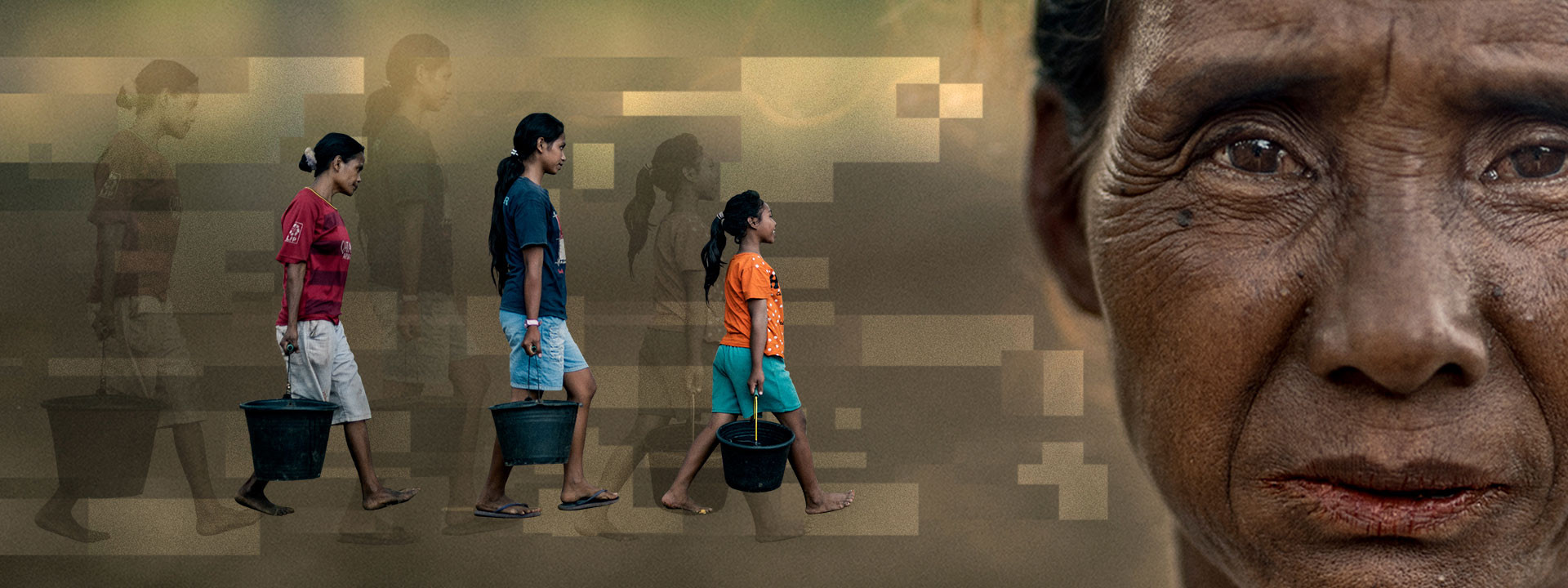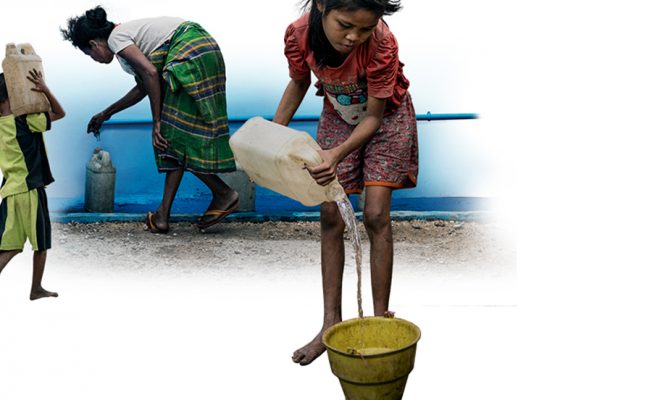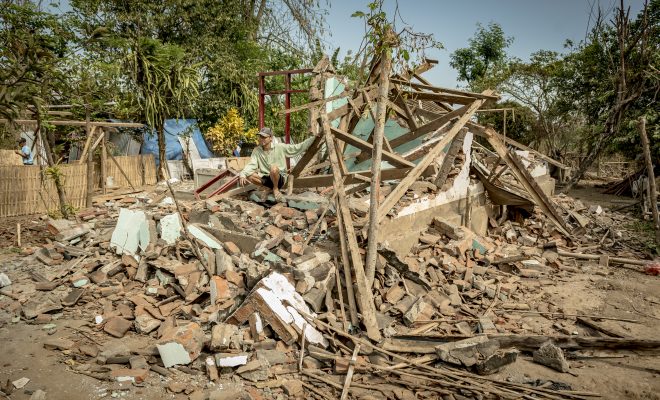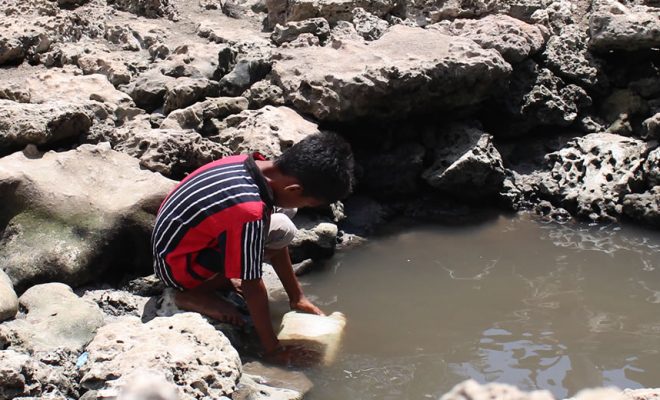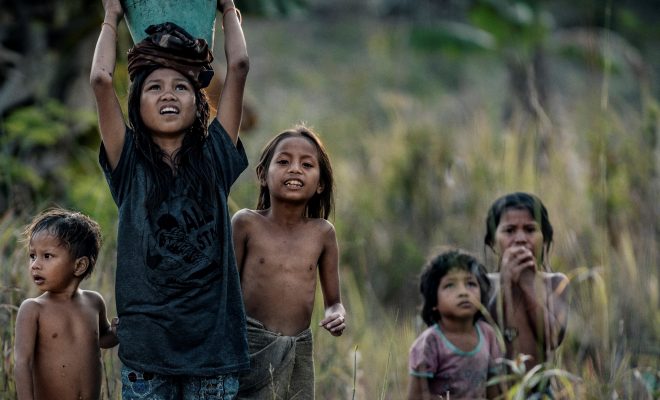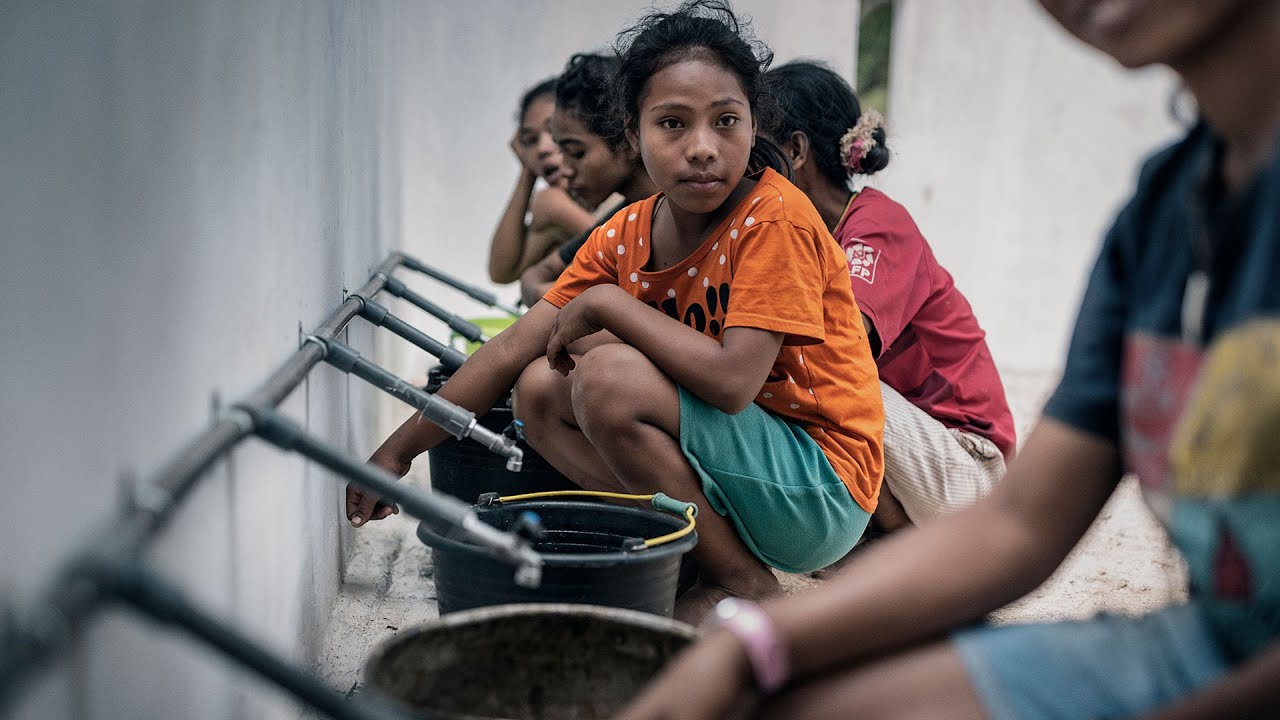
At the school in Watugase, a village in Nagekeo, a district on the Indonesian island of Flores, 120 pupils and 11 teachers share one toilet. None of the district’s primary schools have piped water or wells; they either buy water from the mobile delivery service or take it directly from the river. Sometimes children go to a small spring outside their school, but it does not always flow during the dry season. As there is no water, there are no hand-washing facilities, and, consequently, teaching hygiene practices is impossible.
School children in Watugase, like in Galawea and Malaserade, other villages in the district, suffer from a high incidence of diarrhea and skin diseases. We have started another aid project in partnership with World Vision, which will ensure that some 700 students aged six to twelve and 33 teachers have full access to safe water and proper hygiene and sanitation through the construction of appropriate facilities.
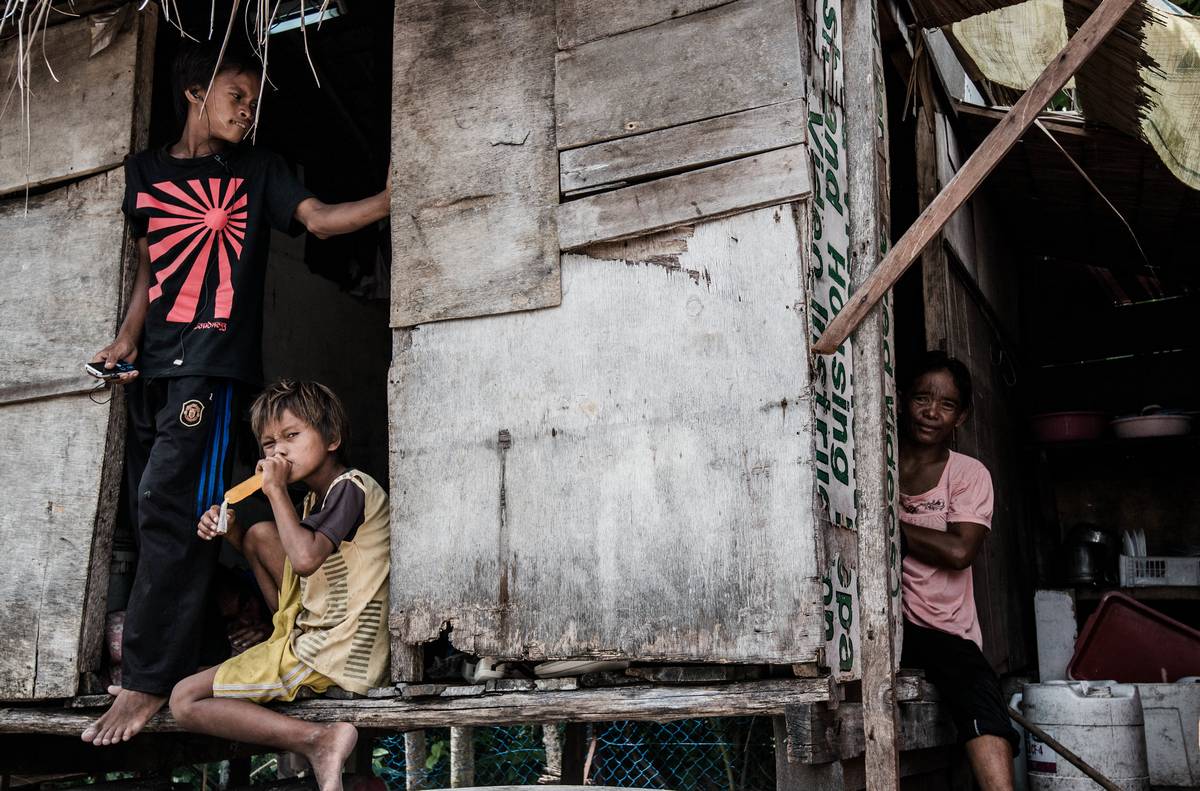
More than 270 million Indonesians live in an emerging economy with severe deficiencies in access to water and sanitation, health, and poverty. © Johnjodeer
Water in abundance but not for everyone
The Nagekeo district is located in the province of East Nusa Tenggara on the island of Flores. According to the Indonesian Ministry of Education, only 1,835 public primary schools (56.8%) have toilets, and only 5.25% have latrines and gender-segregated toilets. Only 458 toilets for boys and 383 toilets for girls are in good condition. The National Ministry of Education Regulation No. 24 of 2007 regulates the ideal ratio of latrines in schools: one toilet for every 25 boys and one for every 40 girls. Still, in East Nusa Tenggara, the ratio is one toilet for every 87 boys and one for every 80 girls.
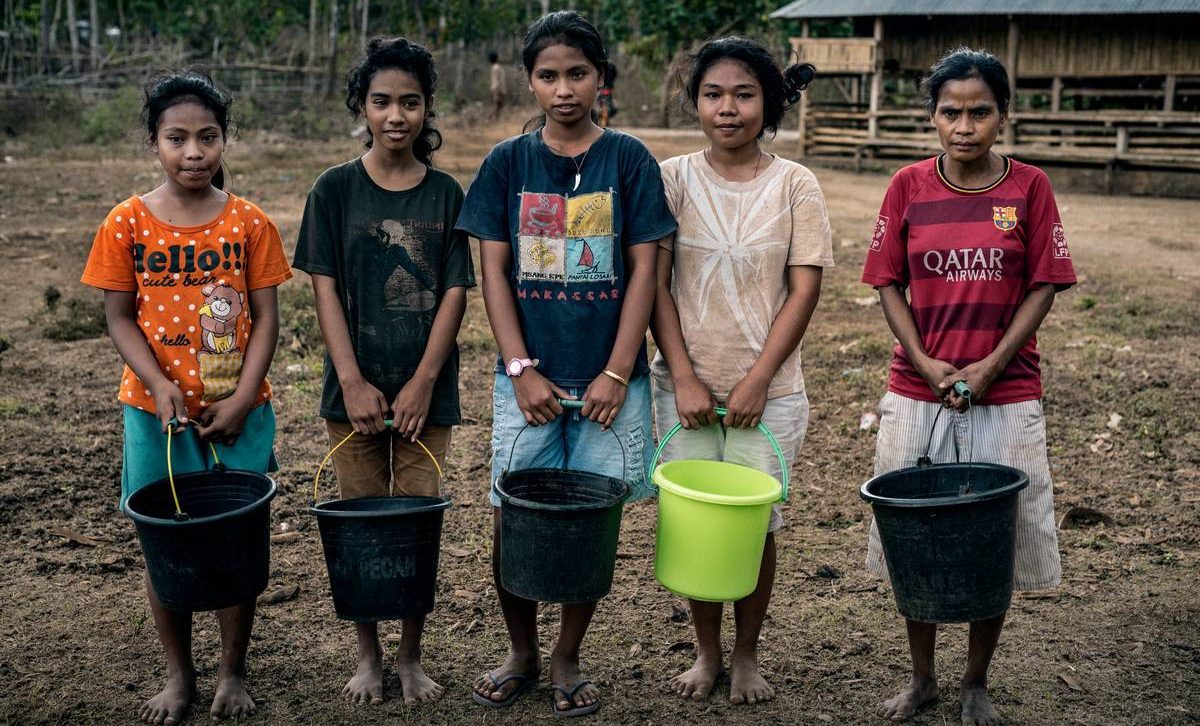
In Nagekeo, we have started another aid project in partnership with World Vision, which will ensure that some 700 students aged six to twelve and 33 teachers have full access to safe water. © Carlos Garriga/ We Are Water Foundation
This is a shocking and unfair reality for schoolchildren, and it does not make sense that this is happening in one of the most water-rich countries in the world. According to World Bank data, Indonesians have 12,200 m3 of fresh water per capita. However, according to the WHO and UNICEF, some 35 million Indonesians do not have access to safe drinking water, with more than three million of them consuming surface water, while 13.2 million practice open defecation.
Moreover, the government itself acknowledges the difficulty of guaranteeing the healthiness of the water supplied: seven out of ten Indonesian households consume water contaminated with Escherichia coli (E. coli) bacteria, the leading cause of diarrhea as revealed by recent WHO studies.
At the Foundation, we have first-hand knowledge of these problems. In Indonesia, our projects have benefited some 8,700 people in several of the most neglected areas. From building a clean water distribution system in Sekadau to installing water filters in Telaga Dalam and Cinto Mandi in Sumatra, and improving access to drinking water in Nusa Tenggara Timur, in the Lesser Sunda Islands. In all these intervention areas there is sufficient water, but the population was unable to access it.
Earthquakes, tsunamis… and loss of biodiversity
Indonesia is also beset by natural disasters. The archipelago is located in the so-called Pacific Ring of Fire, an area with the highest seismic and volcanic activity on the planet (there are around 120 active volcanoes). In 2006, nearly 6,000 people died in a violent earthquake that struck the island of Java. And in more recent history, between July and August 2018, a series of earthquakes reaching magnitude 7 on the Richter scale struck the northern coast of the island of Lombok, located in the Western Lesser Sunda Islands province.
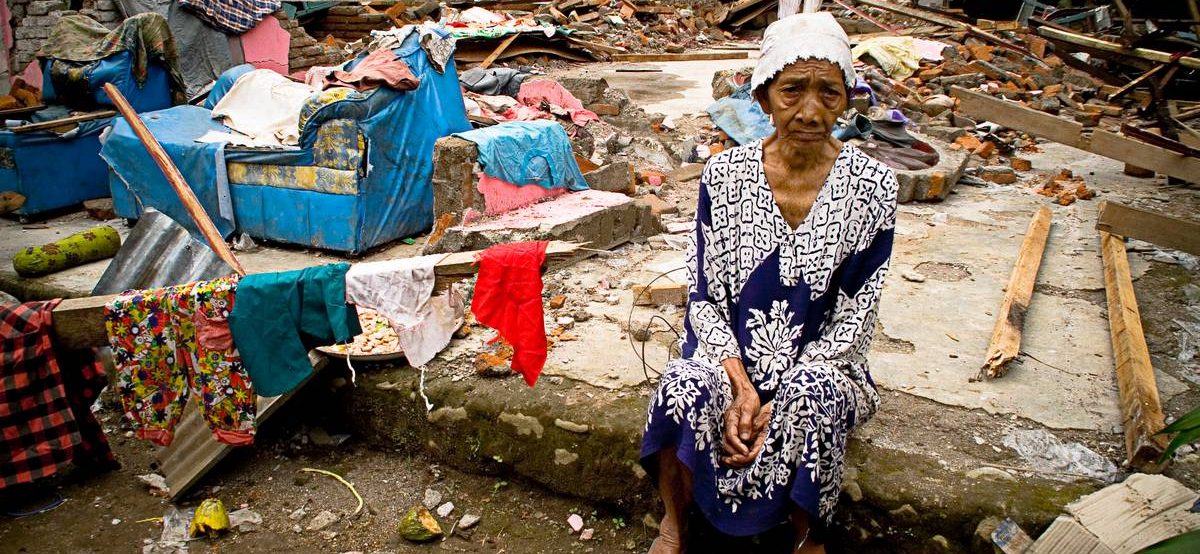
Indonesia is also beset by natural disasters. In the image: after the catastrophe, an old woman sits among the ruins of her house in Pariaman, north of Padang, in West Sumatra. ©Andy Campbell/SurfAid International
The disaster caused more than 500 deaths and 1,500 injuries, and forced some 400,000 people to flee their homes. Then in September, in Central Sulawesi province, a 7.4 magnitude earthquake struck Palu, Mamuju and Donggala. The earthquake and the tsunami that followed caused more than 2,300 deaths. Following these disasters, we supported two projects to provide relief in Central Sulawesi, providing family and child hygiene kits; and in Lombok, providing emergency latrines. These projects helped more than 8,700 people adapt to the disaster and recover from the destruction.
Protecting its biodiversity is another urgent challenge faced by Indonesia. The abandonment of large rural areas, the lack of supply and sanitation infrastructure, and the progressive rainforest deforestation caused by intensive agriculture, timber extractivism and the lack of land management are endemic situations that cause water stress and water shortages. This problem is compounded by the consequences of climate change, which is making itself felt in the country, with an increase in flooding and a change in the alternation between dry and rainy seasons: dry periods are lasting increasingly longer to the detriment of wet periods.
Collaboration, the basis for change
Indonesia has more than 270 million inhabitants and has been growing at a rate of more than 5% in the last ten years. According to the World Bank, it is one of the largest emerging economies and one of the countries with the most significant increase in infrastructure development needs. This is a major challenge due to its geographical distribution: an archipelago with more than 17,000 islands and different socio-economic fabrics.
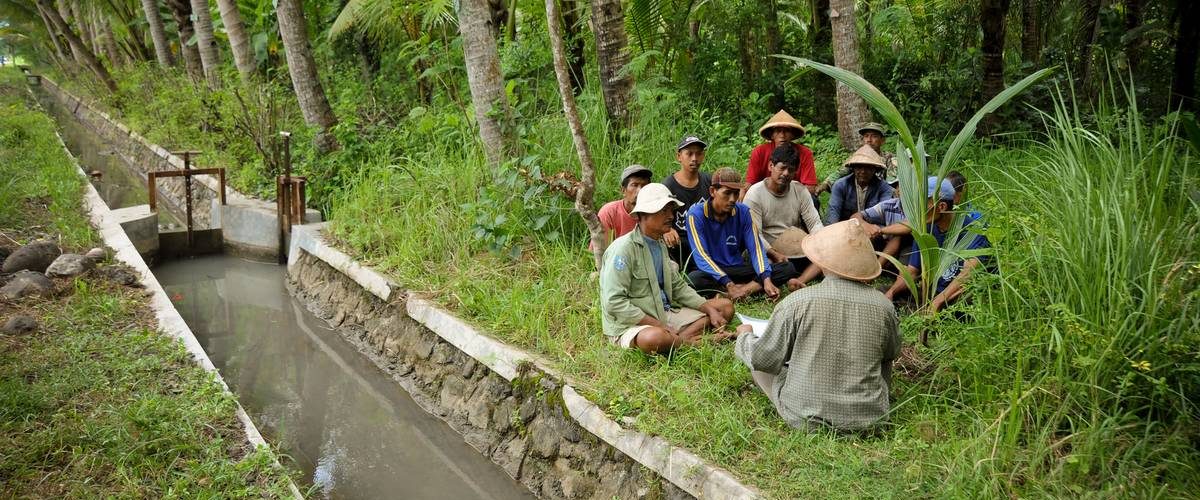
Protecting its biodiversity is another urgent challenge faced by Indonesia. In the image, farmers from the water users group have a meeting in Yogyakarta, Indonesia. Integrated Irrigation. © Asian Development Bank
As in all countries with water quality deficiencies, two of the most important interventions to improve water quality are implementing the WHO’s Water safety plan manual (WSP manual) and capacity building for water quality monitoring.
Since 2017, government collaboration with WHO has led to audits that improved drinking water suppliers’ knowledge and capacities on WSPs. In 2021, the government marked a key milestone by issuing the national WSP roadmap to extend the implementation of the drinking water safety plan until 2025. This plan envisages the implementation of WSPs in 190 districts and municipalities as early as 2024.
The National Medium Term Development Plan 2020-24 was also implemented and aims to achieve 100% access to safe water supply and 90% access to sanitation for Indonesian households by 2024. It is an ambitious plan based on fostering collaboration with international institutions and boosting public-private initiatives.
This plan also has the invaluable value of showing the world the importance of the principles that underpin the philosophy of SDG 17 in achieving the high level of financing needed for water and sanitation projects:“Revitalize the Global Partnership for Sustainable Development,”; and more specifically, its target 17.17: “Encourage and promote effective public, public-private, and civil society partnerships, building on the experience and resourcing strategies of partnerships.”
In any country with severe shortcomings in achieving SDG 6 and, more generally, getting water and sanitation to everyone on Earth, we need the global economy and global politics to make remarkable progress on SDG 17. It is the only way that will put us on track to fully achieve the UN’s 2030 Agenda. Or at least get us closer to it.


